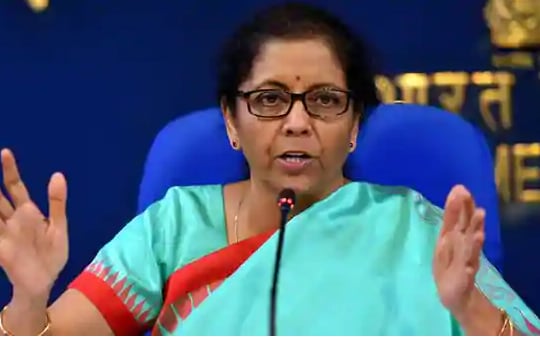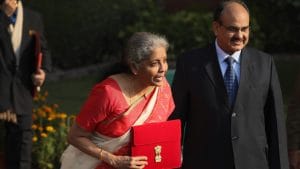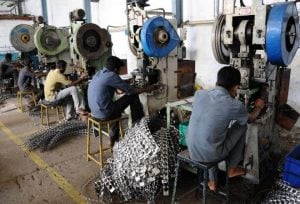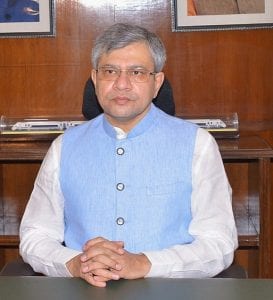New age lending practices can support Indian MSMEs to shift into formal sector

KV Prasad Jun 13, 2022, 06:35 AM IST (Published)
 Listen to the Article (6 Minutes)
Listen to the Article (6 Minutes)
Summary
Credit access can help MSMEs in the unorganized sector get absorbed in the formal economy, easily compete with global players, and gradually move into the organized, formal sector.
MSMEs sit at the centre of India’s economic development, and recent data from the India Brand Equity Foundation corroborates this. India has approximately 6.3 crore MSMEs, contributing about 30 percent of India’s Gross Domestic Product (GDP) and employing over 11 crore Indians.
Despite these encouraging numbers, timely access to finance, as any small entrepreneur will tell you, remains a key constraint to the growth of micro and small businesses in India.
The World Bank estimates that the MSME credit gap in India stands at USD 380 billion. Similarly, another report by International Finance Corporation (IFC) also states Rs 25.8 trillion ($397 billion) as India’s MSME credit gap. 95% of the addressable credit demand comes from micro and small enterprises. Many MSMEs borrow from informal sources such as local money lenders for their cash requirements, at exorbitant rates of interest.
Family and friends continue to be the source of credit for an entrepreneur who lacks the necessary documentation or credit history to apply for a loan. According to the IFC report, formal credit supply addresses only Rs 10.9 trillion worth of MSME financing needs, which leaves an addressable credit gap of approximately Rs 25.8 trillion. Credit access can help MSMEs in the unorganized sector get absorbed in the formal economy, easily compete with global players, and gradually move into the organized, formal sector.
So, how can the new age lending practices bridge this gap and promote inclusion of MSMEs in the formal sector?
Cashflow based lending for MSMEs
When applying for a business loan with a financial institution or bank, lack of credit history acts as a major roadblock for an MSME. To enable credit access to MSMEs without a credit history, cash flow-based lending holds huge potential. This lending model makes it possible for MSMEs to borrow customised, short-term loans from financial institutions based on the business’ past and projected cash flow, including revenue and profit margins.
This model also helps lenders take into account any sectoral or economic risks that could impact the borrower’s business. Cashflow based lending can also work for MSMEs who do not have physical collateral to offer to the lender.
Analysis of MSME’s Bank Statements
Bank statement, which indicates the business’ financial health, can work as a powerful tool for loan sanctioning and approvals. A positive cash balance in the applicant’s bank account tells the lender that the borrower is ‘responsible’ with their finances. It further strengthens his repayment ability to the lender. Consistent revenue streams into the MSME borrower’s account could indicate profitability of business operations. A positive outlook in the bank statement, therefore, increases the MSME’s chances of securing a loan.
Collateral free lending for Financial Inclusion
Historically, lack of collateral had always been a stumbling block for small business owners when applying for loans. This is where digital lenders, especially those that offer unsecured loans, built their businesses on the opportunity to serve this under-served segment.
MSMEs can avail collateral free loans with flexible repayment options to meet their working capital requirements, expand their business, replenish stock, pay salaries to their staff, or to maintain the cash flow of their business. Unsecured loans enable new to credit MSMEs or MSMEs who were previously relying on informal channels, to be included in the formal credit system as applications for such loans need minimal documentation. The MSME only needs business documents such as GST, PAN details, to establish the authenticity of the business.
Building credit history of the MSME
We know that many small businesses or first-time entrepreneurs are unable to avail loans from banks or other formal channels as they lack credit history. Accessibility to debt and timely repayments result in an improvement in the credit scores of the borrowers. Taking a loan from a digital lender enables new-to-credit MSMEs to build a good credit history and thereafter access formal channels of lending based on the credit history thus created. Therefore, digital lenders not only offer speedy credit access to small businesses but also make them eligible for formal credit in the future.
In a survey conducted earlier this year, 55.2 percent of the interviewed customers who had previous credit history showed improvement or consistency in credit bureau scores after availing loans.
Road Ahead for MSME Lending
Identifying the addressable gap and the business opportunity in MSME lending thereof, digital lenders are now putting special focus on loan products for MSME borrowers. This has enabled MSMEs to avail formal credit digitally, irrespective of where they are in the country. Digital Lending also supports faster decision-making due to automated credit underwriting methods and offers speedy disbursements via online modes.
In the last five years, new age lenders, and even existing traditional lenders, have leveraged cutting-edge technology to solve the pain points that customer face across the lending value chain. Policymakers too are increasingly pushing innovative lending models for MSMEs. Account Aggregator framework, for one, is a step in making lending more inclusive.
In the coming years, Open Credit Enablement Network will act as a disruptor in the MSME lending space. OCEN, which is a collective of Lenders, Loan Service Providers, Technology Service Providers, Account Aggregators and Underwriting modellers, will democratize access to formal & affordable credit. OCEN will make the digital ecosystem scalable, more integrated and enable the innovation of customised loan products for MSMEs. Small businesses will be able to access multiple loan products offered by different lenders on the Loan Service Provider’s platform. Akin to a marketplace for loan products, OCEN will make credit more accessible for India’s small businesses and foster their transition into the formal system.
The author, Arun Nayyar, is Chief Executive Officer at NeoGrowth. The views expressed are personal

Elon Musk forms several ‘X Holdings’ companies to fund potential Twitter buyout
3 Mins Read
Thursday’s filing dispelled some doubts, though Musk still has work to do. He and his advisers will spend the coming days vetting potential investors for the equity portion of his offer, according to people familiar with the matter

KV Prasad Journo follow politics, process in Parliament and US Congress. Former Congressional APSA-Fulbright Fellow









 Listen to the Article
Listen to the Article 
 Daily Newsletter
Daily Newsletter













